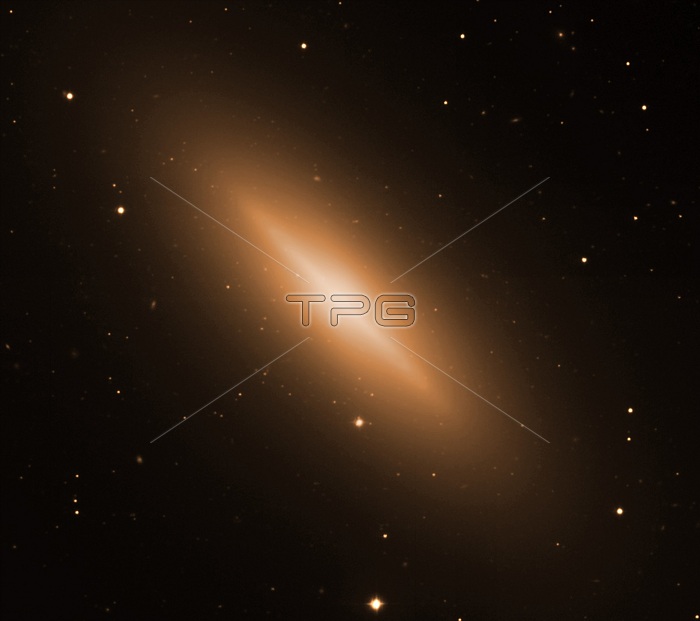
NGC 3115 (Spindle Galaxy or Caldwell 53) is located about 32 million light years from Earth and is classified as a lenticular galaxy because it contains a disk and a central bulge of stars, but without a detectable spiral pattern. The galaxy NGC 3115 contains a supermassive black hole at its center. New Chandra data has been used to clearly image hot gas as it falls toward this giant black hole. This is the first time that clear evidence for such a flow has been observed in any black hole. To detect the black hole's effects, astronomers subtracted the X-ray signal from binary stars from that of the hot gas in the galaxy's center. Then, by studying the hot gas at different distances from the black hole, astronomers observed a critical threshold: where the motion of gas first becomes dominated by the supermassive black hole's gravity and falls inwards. The distance from the black hole where this occurs is known as the Bondi radius. As gas flows toward a black hole it becomes squeezed, making it hotter and brighter, a signature now confirmed by the X-ray observations. The researchers found the rise in gas temperature begins at about 700 light years from the black hole, giving the location of the Bondi radius. This suggests that the black hole in the center of NGC 3115 has a mass of about two billion times that of the Sun, supporting previous results from optical observations. This would make NGC 3115 the nearest billion-solar-mass black hole to Earth. Release date July 27, 2011.
| px | px | dpi | = | cm | x | cm | = | MB |
Details
Creative#:
TOP22313489
Source:
達志影像
Authorization Type:
RM
Release Information:
須由TPG 完整授權
Model Release:
N/A
Property Release:
No
Right to Privacy:
No
Same folder images:

 Loading
Loading